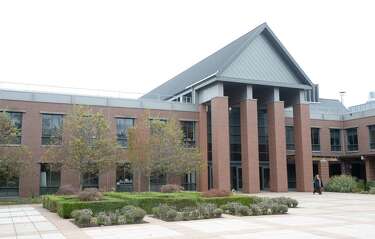Cadenza Innovation developing the future of battery power
New Haven RegisterIt amounted to a relatively small deal in 2013 for billionaire Ray Dalio when he and his lieutenants convinced a noted Boston entrepreneur to move to the Westport area to apply her talents inside the world’s largest hedge fund.
Four years later, it may turn out to be a very big deal for southwestern Connecticut.

Duracell’s research and development facility in Bethel, Conn., where Cadenza Innovation has secured space as it develops lithium-ion battery technology.
Under Lampe-Onnerud and spouse Per Onnerud, Cadenza is designing modular batteries that can be plugged together in series allowing for configurable power — she likens her concept to Lego bricks — while promising designs that prevent overheating and fires or explosions that have won headlines for a few lithium-ion battery manufacturers of late.
That is a particularly important criteria for manufacturers of electric vehicles, with Elon Musk’s Tesla capturing attention this summer with advance orders for a sedan it is mass producing at a suggested retail price of $30,000. In early August, Musk commented on hype versus reality in battery innovation during a conference call with investment analysts.
“I think there are some interesting things on the horizon; but the time it takes from something working in the lab to working at moderate production levels to working at higher production levels to optimizing the cost is several years,” Musk said. “It’s not like it suddenly pops out of nowhere.”

Christina Lampe-Onnerud is the CEO and Founder of Cadenza Innovation, LLC. Photo Tuesday, August 15, 2017
Still, Lampe-Onnerud has a major track record in the field of battery engineering, in 2010 receiving a “Technology Pioneer” award from the World Economic Forum as well as her election to the Royal Swedish Academy of Engineering Sciences. Per Onnerud holds more than 150 patents in his own right, and is chief technology officer at Cadenza.
Connecticut Innovations is among the venture funds that have furnished early financing to Cadenza, as has the U.S. Department of Energy’s ARPA-E program, which has funneled $5 million.
Technical breakthroughs
Lampe-Onnerud created Cadenza in 2012, adopting the name in reference to an interlude in a live musical performance when a musician is given space for freedom of expression. Lampe-Onnerud is a soprano singer in the Silk’n Sounds Chorus, an a cappella singing group based in New Haven.
She grew up in Sweden excelling in school and music, torn between the two (she was trained as an opera singer) before focusing on math and inorganic chemistry, later coming to MIT to pursue postdoctoral studies. She would head to Bell Labs in New Jersey in a licensing role, then spent several years as a managing director and president at the technology and strategy consultancy Arthur D. Little in Cambridge, Mass.
That exposed her to any number of organizations grappling with the implications of technical breakthroughs they had achieved and where future trends were headed, from smaller startups to big agencies like the U.S. Department of Defense and Consumer Product Safety Commission, in the latter case helping CPSC investigate 15 years ago alarming incidents of lithium-ion batteries catching fire or exploding.
As she recalls it, at the time in the early 2000s there were some 20 million lithium-ion batteries under recall, and she left to start Boston-Power with the simple thought of trying to do something about the problem herself. Boston-Power would build a super-charged customer list that included the likes of HP and General Motors. Chinese investors ultimately bought the company’s technology, giving Lampe-Onnerud an interlude to think about her next endeavor.
“When you stand on the dock to watch your ship float away, you can reflect on what’s different — what are the insights … how would you play it differently,” Lampe-Onnerud said. “I feel I have planned my whole life for (Cadenza).”
After Bridgewater reached out, Lampe-Onnerud joined the hedge fund, intrigued by the opportunity to work on big-picture ideas in a very different setting. She spent about 18 months there in 2013 and 2014 before leaving to push ahead alongside Per with Cadenza, securing excess lab and office space at Duracell’s research facility in Bethel.
Cadenza has about 20 employees; in the long run, Lampe-Onnerud said her company could in time match Duracell as a local employer, or could remain small and nimble by licensing its developments to others. In June, Cadenza won its first patent on a core technology, a major moment for a startup up facing any number of global players.
“My dream is to put together a ‘Lego block’ of energy,” Lampe-Onnerud said. “You configure it. It’s just ‘click, click, click’ — you put it together, and you are done. It’s not that complicated.”
Alex.Soule@scni.com; 203-842-2545; www.twitter.com/casoulman